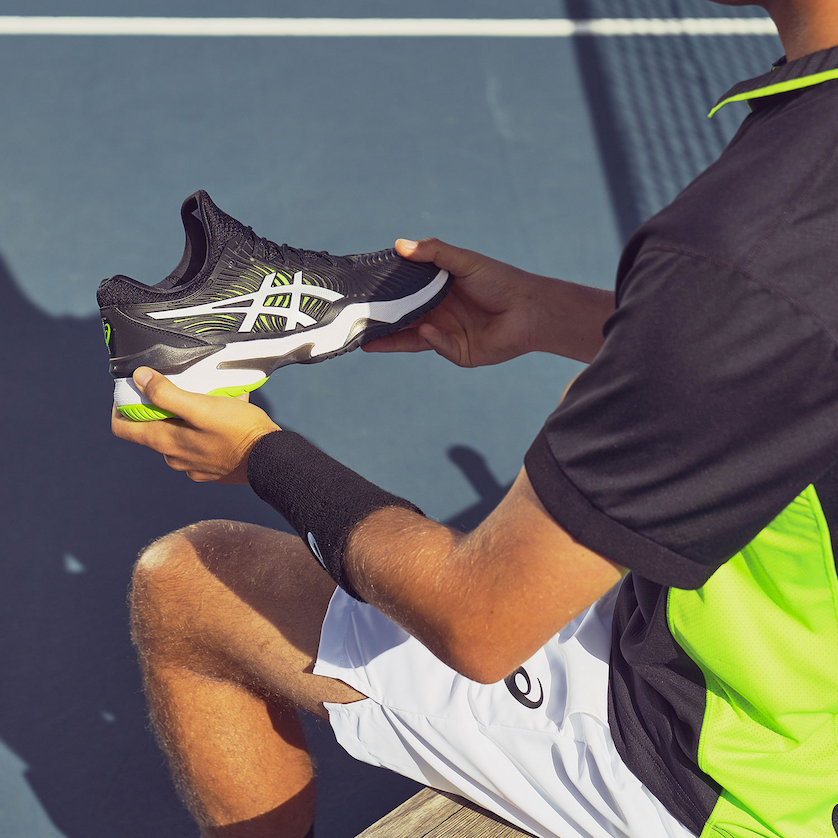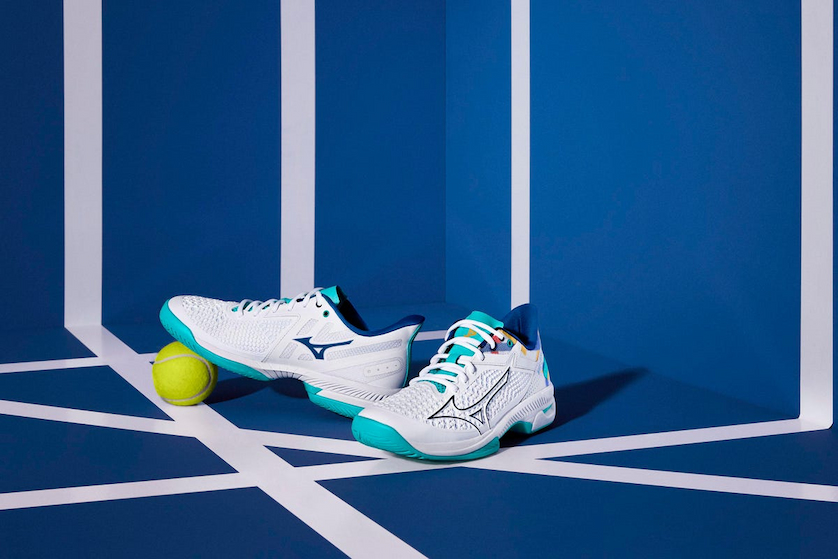Certain sports and activities require specific types of shoes that will increase your comfort and efficiency. For example, the same pair of shoes won’t be ideal for both hiking and playing basketball. The same thing goes for tennis. Tennis is an active physical sport where your feet take on a lot of abuse.
Whether you’re a beginner or a seasoned player, choosing the right tennis sneakers is essential for your safety, comfort, and playing efficiency. Shoes for tennis are available in a variety of designs, ranging from heavier models that focus on stability to lightweight sneakers that offer you more speed. If you’re looking to get a high-quality pair for your tennis matches, browse through these versatile and comfortable tennis shoes.
They’re made from a flexible and breathable material and have a sturdy construction that offers a more secure fit. They’re designed to keep your feet safe and cushioned during the quick starts-and-stops, short sprints, and lateral movements which are common in tennis. They also come in a wide range of colours, both vibrant, and pastels, as well as neutral black and white sneakers. That being said, there are a few things to keep in mind before deciding on a pair of tennis sneakers.

Source: mistertennis.com
Contents
Find Shoes That Fit You Well
One of the first things to consider before stepping on the court is that your shoes are the proper size. You should have an approximately 13mm gap between your big toe and the front end of your shoe. This prevents your toes from jamming and keeps blisters at bay. On the other hand, larger shoes cause your foot to move more, which leads to blisters and muscle issues.
For some people, the outer bones in their ankles come in contact with their shoes. This leads to a lot of friction and discomfort. If you frequently have this problem with footwear, consider getting tennis sport shoes with a lower upper edge.
What to Consider When Buying Tennis Shoes?
Some shoes feel great out of the box but don’t live up to your expectations once you get on the court. Finding the perfect pair of shoes isn’t always straightforward, and you often have to make do with compromises. I’m going to go over some essential characteristics that will assist you in choosing your next pair of shoes.
Comfort
The shoes for playing tennis are stiffer by nature than other types because they must handle a wide range of motion. This includes lateral motions, which are necessary while striking the court. To ensure your comfort, look for shoes with large midsoles. If the midsole is detachable, you can choose to replace it for more comfort.
Stability
Playing tennis often requires sharp and abrupt movements. This is why specialized sneakers are designed to give you the appropriate stability, whether you’re hitting groundstrokes, volleying, or moving back to track down a lob. These shoes offer you stability with a few added features:
- A wider front sole which gives more balance.
- A firm outer sole that handles quick start-and-stop movements.
- Inner lining that wraps around your foot, keeping it in place and preventing it from sliding forward.
Weight
Last but not least, before buying tennis shoes it’s important to consider their weight. Lightweight shoes feel quicker, whereas bulkier shoes are more durable but feel more sluggish. To achieve the right balance, shoe manufacturers often make a trade-off between weight, stability, and durability.

Source: www.forbes.com
Shoe Outsoles and the Court’s Surface
Much like tennis balls, shoes are constructed individually for each court surface: hard court, clay, and grass.
Hard Courts
This surface is hard on your shoes – and your shoes are hard on it as well. To avoid scuffing the surface, most hard-court tennis sneakers are non-marking. They prioritize shock absorption to provide you with comfort and support on the rougher surface. On the outsole, many sneakers provide durability wear guarantees.
Clay Courts
Clay courts are softer and require different types of shoes. Clay-court tennis shoes often have synthetic uppers, herringbone thread patterns that won’t clog with clay, as well as a reduced weight for increased speed and manoeuvrability.
Grass Courts
Similar to shoes for clay courts, the grass-court designs have a nub-patterned sole to provide improved traction on potentially slippery grass. Uppers typically contain a mix of both synthetic and mesh materials.
All Courts
Most tennis shoe manufacturers now offer all-court tennis shoes that are intended to manage the nuances of all three court types. These multi-purpose models may be your best bet if you won’t be playing on a single sort of surface.
Playing Style

Source: merchantoftennis.com
Lastly, you can find different styles based on your preferred style of play:
- Baseline Performer – A baseline player’s primary job is to defend the court’s backline. The shoes that a baseline player needs must provide lateral support. Due to the frequent lateral motion, a highly robust sole is also required.
- Volley-and-Serve Player – This type of player charges at the net frequently. During the serve, he slides his rear foot on the court, so he needs a shoe with a durable toecap (also known as a reinforced toe) and medial inside the arch.
If you want to ensure your feet’s comfort, safety, and efficiency, check out premium-quality shoes online before hitting the court.











